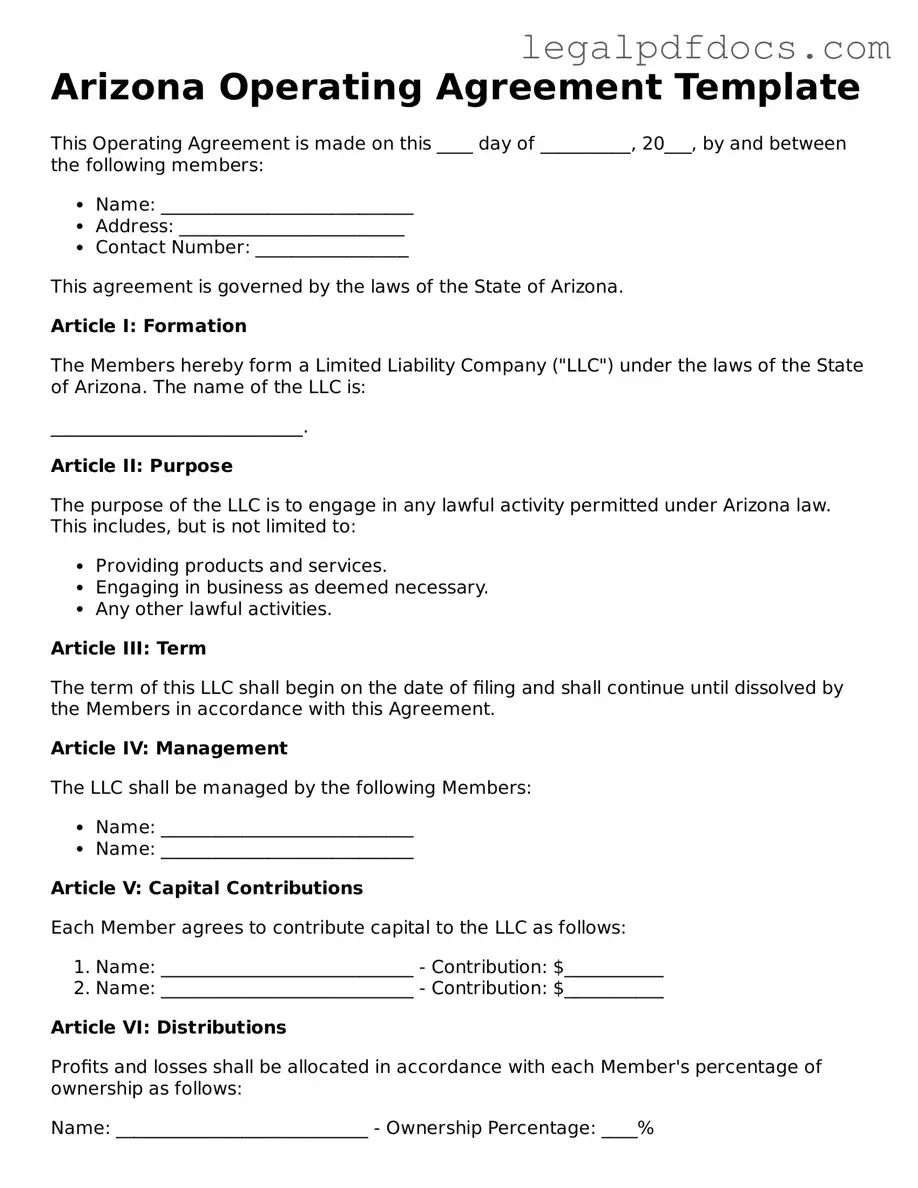Official Operating Agreement Form for Arizona
The Arizona Operating Agreement form is a crucial document that outlines the management structure and operational guidelines for a limited liability company (LLC) in Arizona. It serves as a foundational agreement among members, detailing their rights and responsibilities. Understanding and completing this form is essential for ensuring your LLC operates smoothly and legally.
Ready to get started? Fill out the form by clicking the button below.
Open Operating Agreement Editor Here
